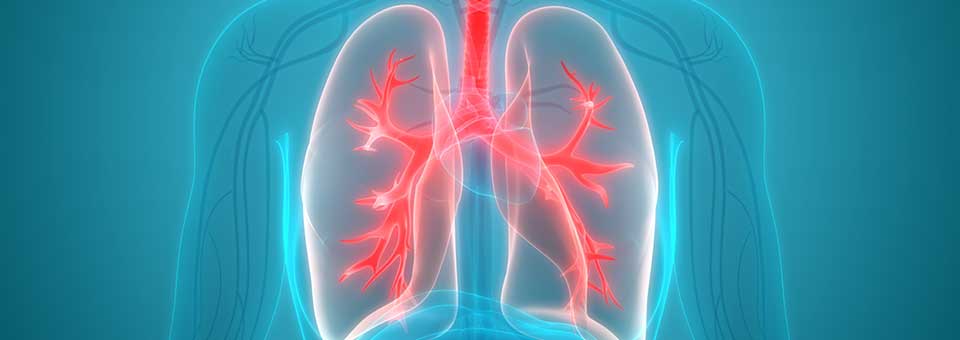You’ll never hear this from a doctor, but your lung power is the best predictor of how long you’ll live.
Even more important, it predicts the energy and vitality you’ll have throughout your life.
Doctors miss another critical point.
They’ll tell you it’s impossible to regain the lung strength of your youth… Insisting you’ll never experience that satisfying feeling of taking a full, deep breath.
Not true.
In a moment, I’ll show you two ways you can easily boost your breathing power.
The Legendary Framingham Heart Study Proves
Your Lungs are the #1 Indicator of All-Cause Mortality
There are multiple studies that show the importance of your lung power, including the Framingham Heart Study, which reviewed 60 years of data, and the American College of Chest Physicians’ 29-year follow-up study.[1],[2]
In each case, lung health proved to be the primary indicator of all-cause mortality. You see, without enough lung power, you risk a dangerous oxygen deficit in every cell, tissue, organ and organ system in your body.
Poor lung function and low oxygen cause your body’s key cellular processes to slow down making you more susceptible to chronic disease – including cancer, chronic obstructive pulmonary disease (COPD), idiopathic pulmonary fibrosis (IPF) and amyotrophic lateral sclerosis (ALS).
The potential result? You lose vitality and stamina, and become short of breath. Your cells lose the energy they need to repair DNA. Your immune system slows down.
Low lungpower also means your heart isn’t as strong as it should be, your circulation becomes sluggish and not enough oxygen reaches your brain, raising the risk of cognitive decline.[3]
Lung Power Doesn’t Have to Decrease as You Age
Lung power typically decreases with age. But it doesn’t have to.
I recommend my patients pay careful attention to their inspiratory capacity, or IC. This is a lung volume measurement that can be captured with a straightforward spirometry breathing test.
The next time you visit your doctor, you should insist on getting your IC measured. Inspiratory capacity measures the total volume of air you take in during normal breathing activity, and it’s one of the best ways to determine the health of your lungs.
An adult’s normal inspiratory capacity is around 3 liters. But if your IC is noticeably lower, your lungs may be holding trapped air, because you aren’t able to fully exhale.
You may have obstructed or restricted airways and other respiratory functions – and unless you do something about it, your health will only deteriorate. The good news is that you can easily reverse a low IC measurement.
Two Techniques for Repairing Your Lungs
- Breathe easier with PACE: As a regular reader, you know I designed this unique exercise program to rebuild my patients’ lung and heart capacity. PACE stands for Progressively Accelerating Cardiopulmonary Exertion and it expands your lung capacity with brief but incrementally more vigorous routines of intensity. It also makes your lungs stronger and more efficient.
My son Dylan leads free PACE classes for my staff each week. I want them to take full advantage of the benefits of this program which takes just 12 minutes. Anyone can do it, no matter their age or fitness level. And, you don’t need expensive equipment or a gym membership.
You’ll find some of my PACE exercises to get started with on my YouTube channel: https://www.youtube.com/user/AlSearsMD/videos.
- “Breath of Life” technique: Pranayama is a type of controlled breathing used in yoga meditation. It’s a Sanskrit word – from prana, meaning breath of life, and ayama, which means expansion.
Pranayama is usually done kneeling, in a lotus position, or even seated. You simply inhale deeply followed by rapid exhalation. It can be done at various speeds, but start slowly with deep, relaxed inhalation and a “haa” exhalation for about 15 minutes a day. The emphasis is on chest breathing, rather than abdominal. It’s also a great way to relieve stress.
Multiple studies, including a recent systematic review of pranayama breathing, found that it significantly improves pulse rate, blood pressure and respiratory function measurements, including inspiratory capacity.[4]
[1] Splansky GL, et al. “The third generation cohort of the National Heart, Lung, and Blood Institute’s Framingham Heart Study: Design, recruitment, and initial examination.” Am J Epidemiol. 2007;165(11):1328-1335.
[2] Schünemann HJ, et al. “Pulmonary function is a long-term predictor of mortality in the general population.” Chest. 2000;118:656-664.
[3] Dodd J. “Lung disease as a determinant of cognitive decline and dementia.” Alzheimers Res Ther. 2015.
[4] Saoji, AA, et al. “Effects of yogic breath regulation: A narrative review of scientific evidence.” J Ayurveda Integr Med. Jan-Mar 2019;10(1):50-58.

